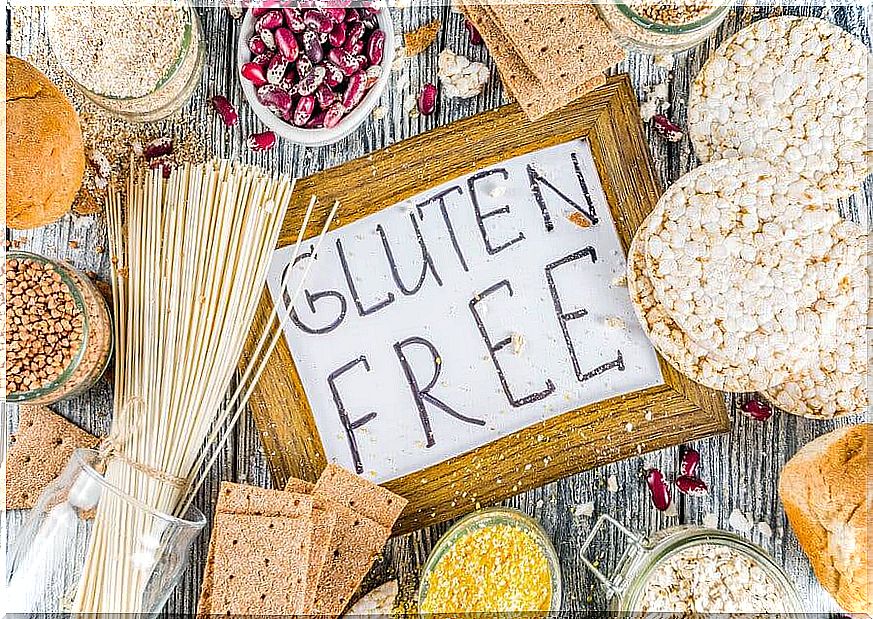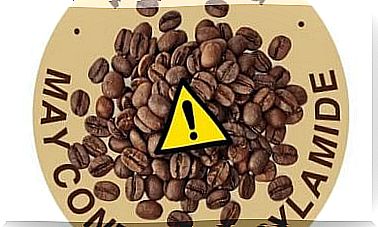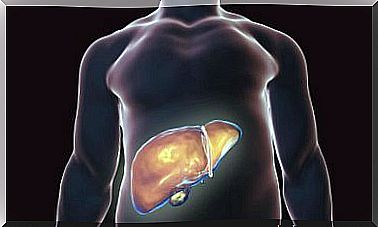Breaking The Gluten Myths

Currently, the only treatment for disorders related to gluten consumption is absolute dietary restriction. However, in general, there is a tendency in the population to adopt a gluten free diet for no reason to do so. What motivates them? Some myths about gluten that we’ll clarify next.
Much has been said about this protein, present in foods such as wheat. Some emphasize that its restriction improves health, contributes to weight loss, and that its intake is toxic to people. Therefore, it is necessary to break the myths about gluten imposed by marketing and society.
What is gluten?
For starters, it’s important to review the meaning of gluten. Wheat is one of the whole grains with the highest production and consumption in the world, thanks to its nutritional contribution, chemical properties and long shelf life.
It is made up of two main proteins: gliadin and glutenin (mostly known as gluten). However, there are proteins present in other whole grains, such as rye (secaline) and barley (hordenine), which have similar chemical and functional functions, as well as interactions within the body.
Impact of gluten on industry and health
Authors such as Biesiekierski J refer to these proteins as key elements in the food industry, as they provide viscosity, elasticity, and allow the absorption of water in baked goods. Likewise, they provide important organoleptic characteristics for products such as pasta, meat, ice cream and sauces.
Although gluten has multiple functional properties, there are adverse effects after consumption in certain individuals. The evaluation of diets excluding these proteins has historically and consistently shown that wheat and other related proteins are common factors that induce gastrointestinal symptoms and damage in vulnerable populations.
As a protein that interacts with genetic and environmental factors, it is necessary to know its interaction in the body, possible changes and related diseases, in order to break with the myths about gluten that generate non-medical diagnoses and unnecessary dietary changes.

Diseases related to gluten consumption
Health disorders related to gluten consumption are defined by the adverse reaction, mediated by the immune system or other mechanisms, after ingestion. Among them, the most common are:
Celiac disease
To begin with, celiac disease is an autoimmune intestinal pathology that occurs due to exposure to gluten and other related proteins in the diet, as well as the interaction of genetic and environmental factors. The overall prevalence of this disorder is only 0.5% – 1%.
Based on determinants in the histocompatibility complex, it is associated with the disease with an inflammatory response (mediated by pro-inflammatory cytokines and special T lymphocytes) in the face of gluten consumption, which causes intestinal damage in a genetically vulnerable population.
When generating damage to the intestinal mucosa, the villi responsible for the absorption of macro and micronutrients are altered, creating serious problems for the individual’s nutrition.
Its diagnosis is complex, since numerous symptoms are attributable to other diseases, which is why serological tests are needed to detect specific immunoglobulins and antibodies, as well as a duodenal biopsy. Among the main symptoms are:
- Gastrointestinal disorders such as nausea, vomiting and frequent diarrhea
- growth arrest
- Dermatitis herpetiformis
- Low weight
- amenorrhea

Allergy to wheat and other proteins
This is an E-immunoglobulin-mediated response to the consumption of insoluble gliadins present in wheat. It is estimated that 0.4% of the world population is allergic to wheat, with babies being the main group affected.
Due to symptoms that can be confused with other disorders and diseases (vomiting, abdominal pain, diarrhea, digestive bleeding, asthma, cough, laryngitis, rhinitis, conjunctivitis, urticaria, edema or inflammation, atopic dermatitis, anaphylaxis reactions), it is necessary to perform serological tests to measure allergen-specific immunoglobulins present in wheat.
Is non-celiac gluten sensitivity a disorder?
The definition of this disorder remains a matter of debate, since the damage that occurs is low compared to the two previous diseases. Therefore, it does not cause permanent intestinal damage. Intestinal sensitivity occurs after ingestion of gluten or other proteins present in wheat and is not mediated by immunological mechanisms.
For each of these disorders, the only treatment that improves symptoms and prevents nutritional deficiencies is a gluten-free diet. This meal plan should be prepared with the guidance of a nutrition expert.
Diet and Myths About Gluten
Currently, the gluten-free diet has gained popularity despite the higher price of gluten-free products. First, it must be emphasized that this diet is absolutely necessary for patients with celiac disease, as even small amounts of gluten can cause severe damage to the intestinal mucosa.
In addition, this treatment helps to improve clinical symptoms in patients with allergies and sensitivity to gluten or other related proteins. For this, it is necessary to identify the products that, by nature, have gluten:
- Whole grains: wheat, barley, rye, spelled, oats
- Bakery and confectionery products
- Pasta: noodles and the like
- Drinks: beer, barley water
Products in which the presence of gluten may be hidden:
- Sausages and cold cuts in general
- Yogurt with flavor and fruit
- processed cheeses
- pates
- Canned meat and fish
- Candy
- Substitutes for coffee, chocolate and other products
- Ice creams
- Chocolate
As a result, and to avoid problems associated with myths about gluten, the food industry currently offers products that guarantee its absence ; only those labeled “gluten free” should be identified.

Beware of gluten myths and fads
While it’s true that gluten can damage the health and nutrition of people genetically susceptible to eating disorders, joining the gluten-free trend without medical advice can cause health changes.
There are myths about gluten that its exclusion contributes to weight loss, which is not true. There are many commercial gluten-free products that are high in sugars and fats, so excessive consumption can lead to a significant increase in body weight.
According to the World Health Organization, in Spain, for example, six out of every hundred consumers include gluten-free products in their diets and have health problems. Eliminating this protein from the diet without medical advice can cause serious intestinal disorders.
Finally, if you don’t have characteristic symptoms or a clinical diagnosis issued by a healthcare professional, avoid falling into marketing traps by believing the myths about gluten.









